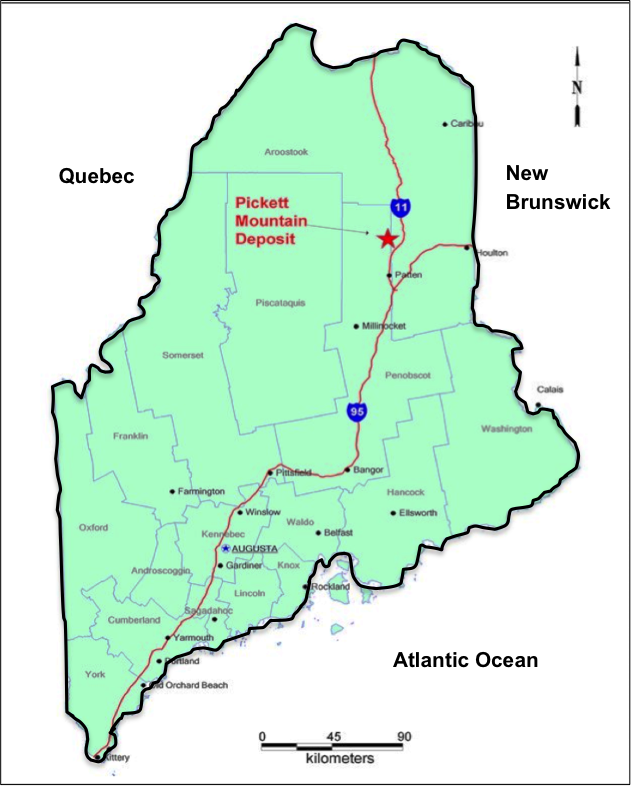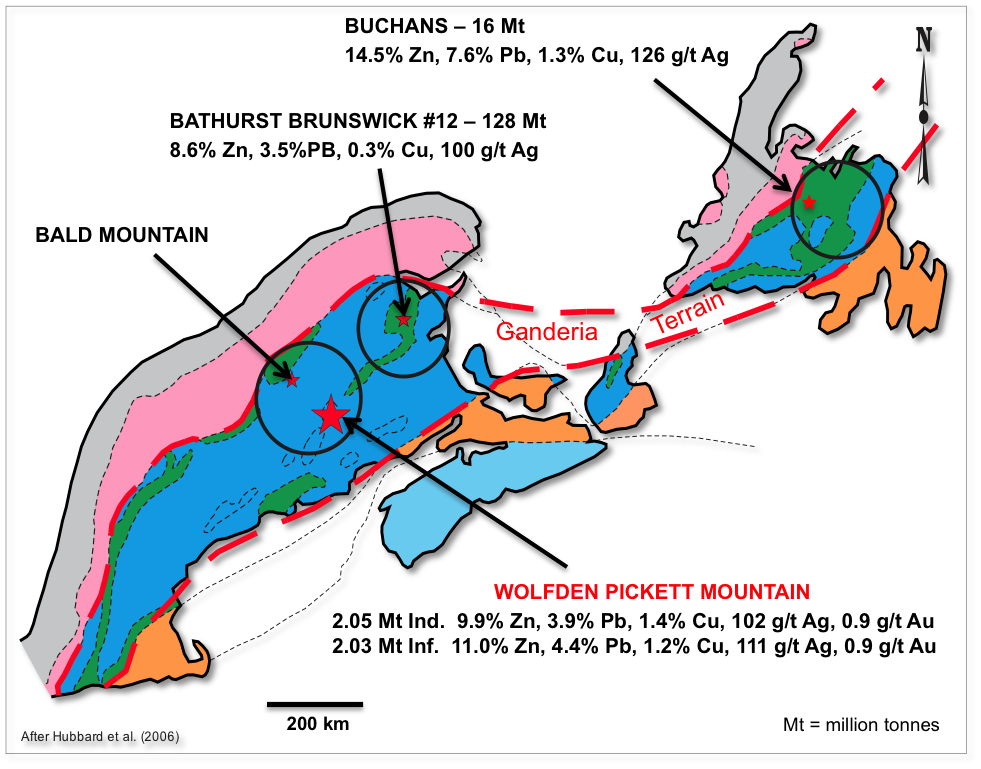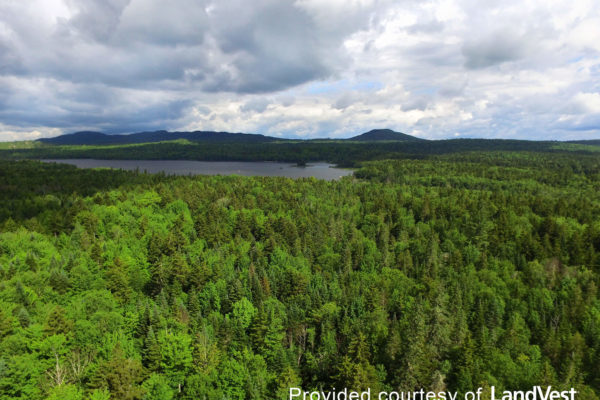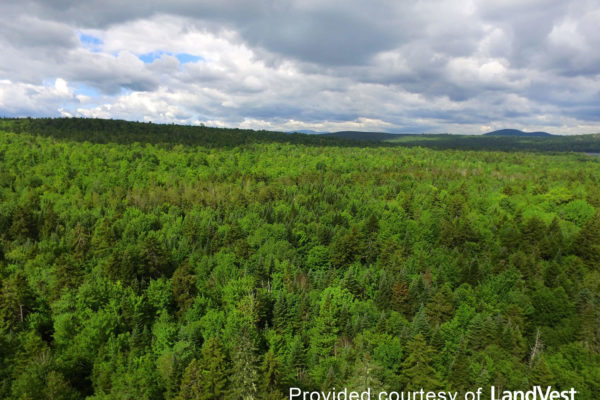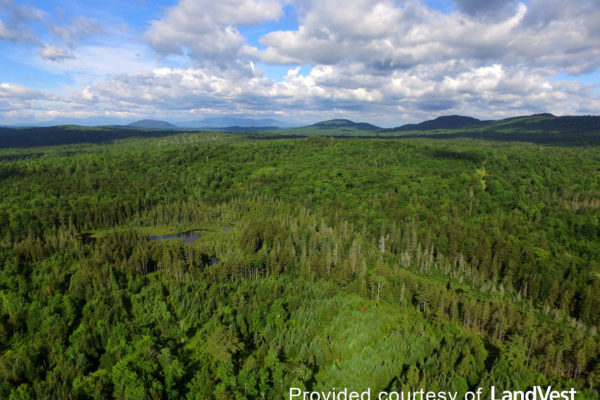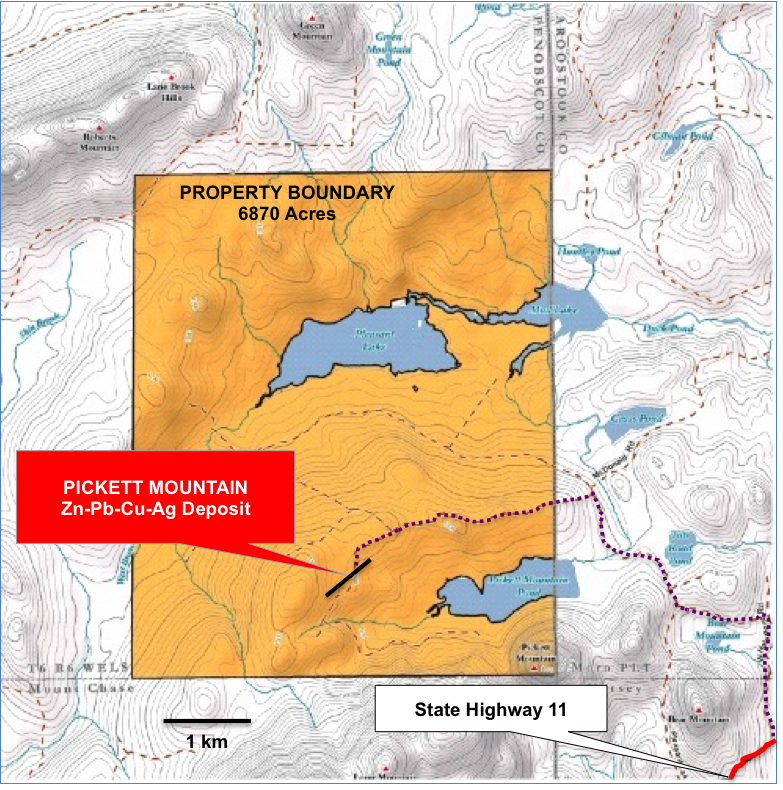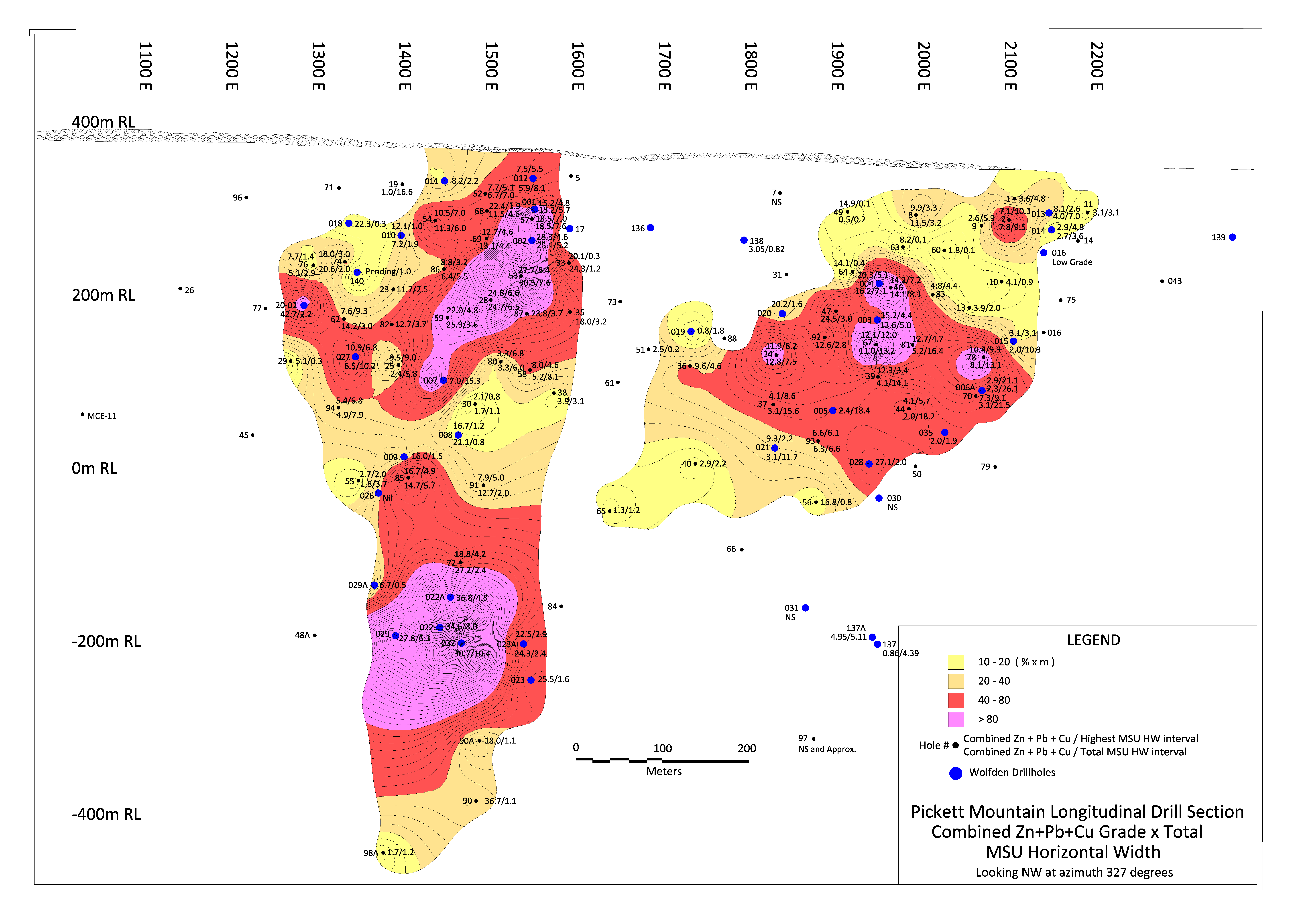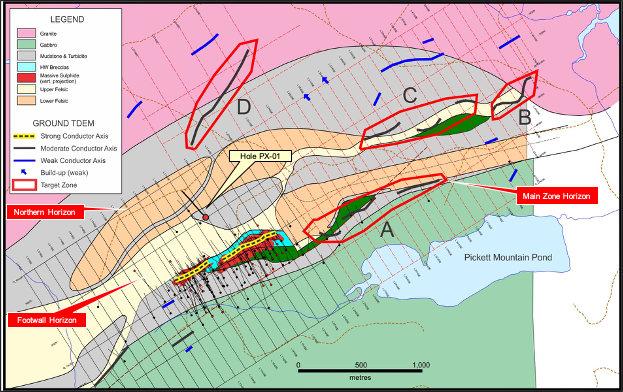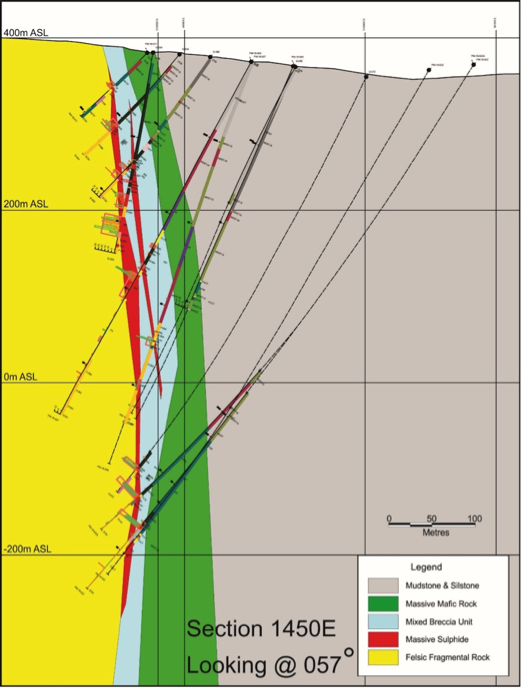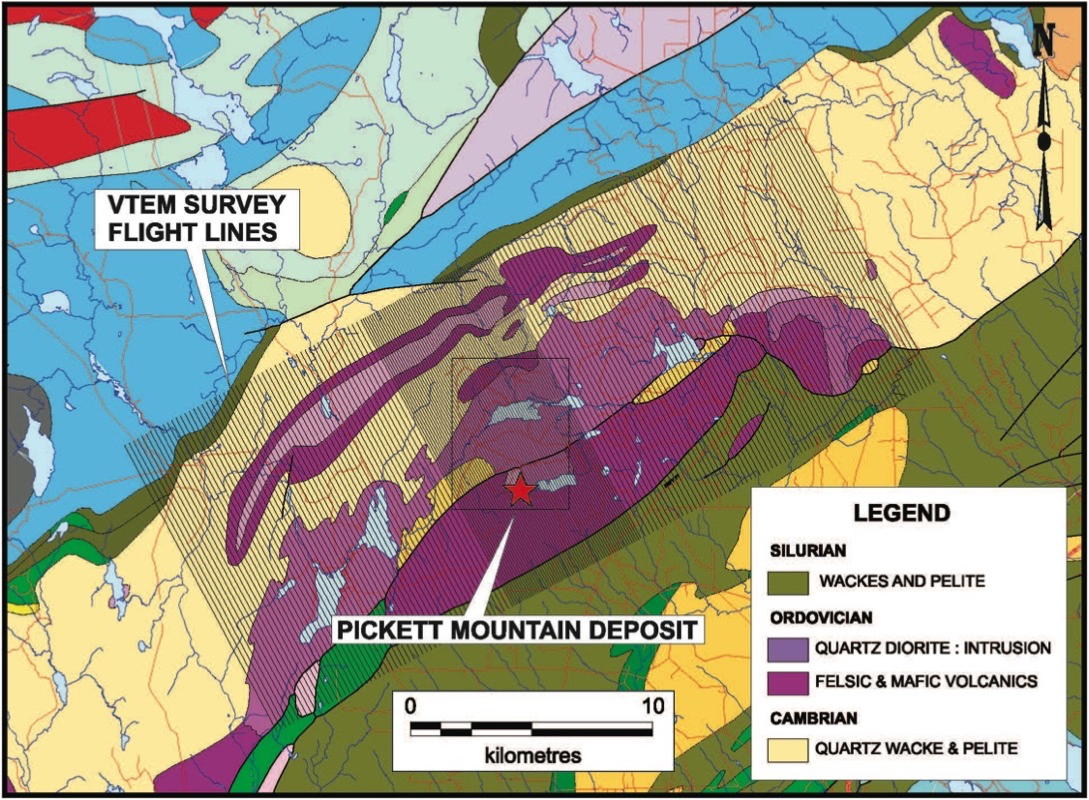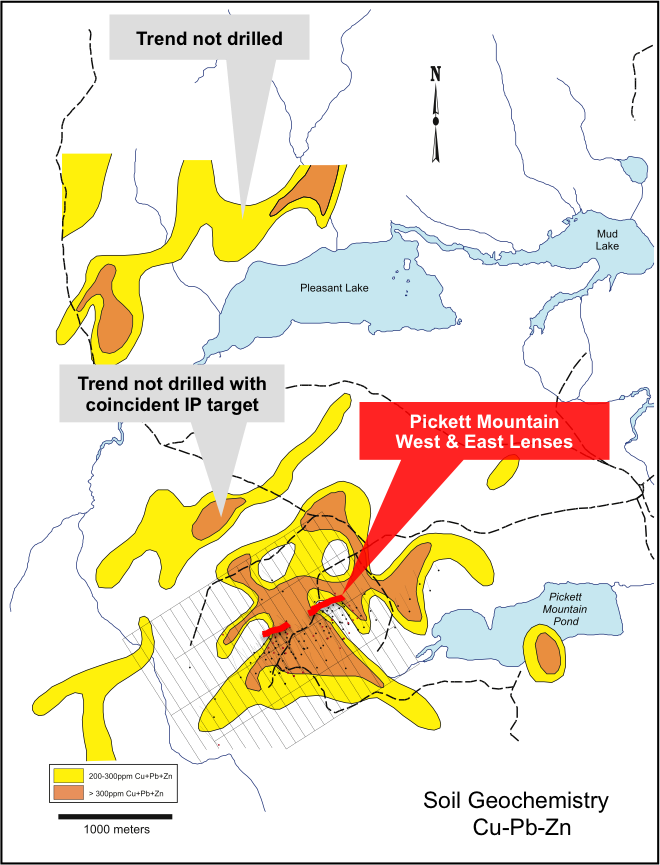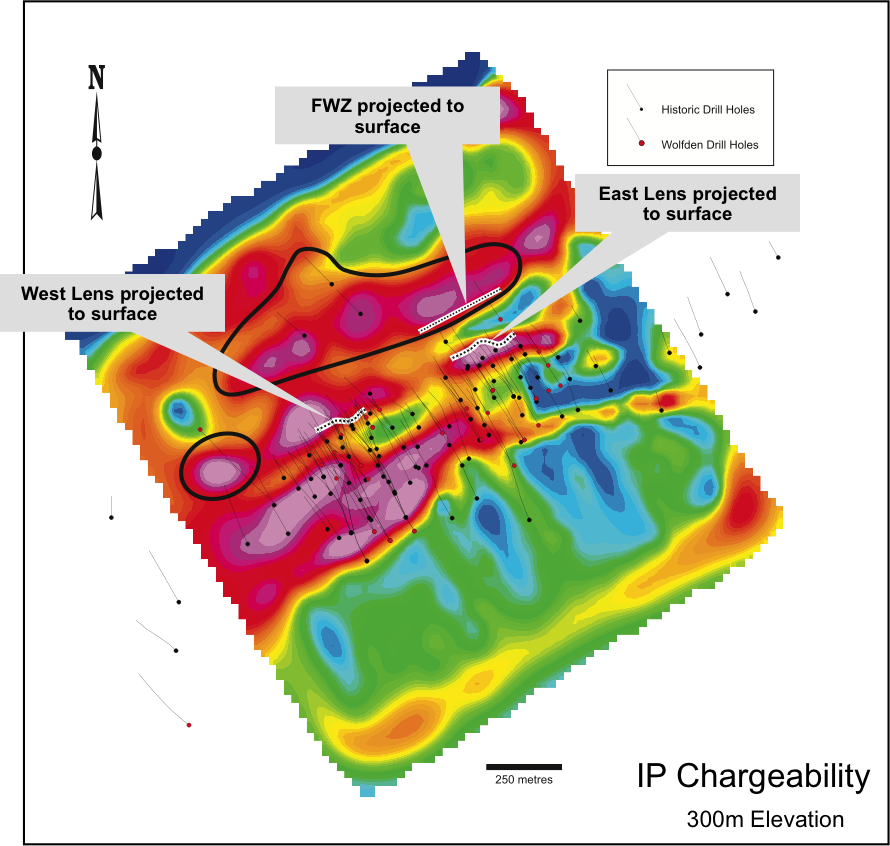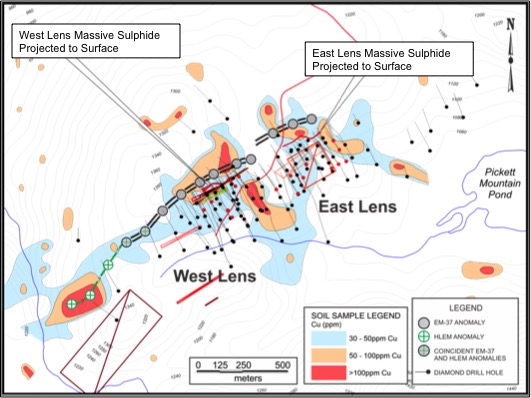Located in Penobscot County of northern Maine, U.S.A., the Pickett Mountain VMS deposit is one of the highest grade undeveloped polymetallic massive sulphide deposits in North America. It occurs in the Northern Maine Volcanic Belt, an Ordovician-age rift-related assemblage comprising part of the Gander Terrane in the eastern North American Appalachians.
The Gander Terrane is well-endowed with numerous Zn-Pb-Cu-Ag massive sulphide deposits including 46 known deposits in the Bathurst Mining Camp in New Brunswick as well several in the Buchans mining district in Newfoundland. The Bathurst Mining Camp is one of the premier VMS districts in the world, featuring the world-class Brunswick #12 deposit, with past production of 128 million tonnes grading 8.57% Zn, 4.49% Pb, 0.34% Cu and 99.9 g/t Ag. Similarly, the Buchans deposit in Newfoundland was an important deposit, with past production of 16 million tonnes at a grade of 14.51% Zn, 7.56% Pb, 1.33% Cu, 126 g/t Ag and 1.37 g/t Au. In contrast, the Northern Maine Volcanic belt is host to only 6 deposits, largely due to a significant lack of exploration and Maine’s previously unworkable mining laws and regulations over the last 30–40 years.
A new mining law, recently enacted in the Maine legislature in November 2017, provides clarity on the process to permit the mining of metallic minerals in certain situations and with higher commodity prices, interest in high-grade VMS projects like Pickett Mountain has been revived. Due to the lack of more modern exploration, and clarity in the new regulations, Wolfden believes there is significant exploration upside in this jurisdiction for its stakeholders.
Property highlights
Average grades
10
4
1.5
100
Preliminary concentrate recoveries
88% Zn
78% Pb
77% Cu
Property gallery
Land Tenure & History
The Pickett Mountain property is located in Northern Maine in Township 6, Range 6 of Penobscot County. Patten is the nearest town to the property located 10 miles to the south along State Highway 11. The deposit is situated just 3 miles off of the highway that also has a full service power line and were year round access can easily be gained from a network of logging roads. Access to rail is 15 miles to the southwest from the town of Island Falls.
The Pickett Mountain massive sulphide deposit was formerly known as the Mount Chase deposit and discovered in 1979, by Getty Mining Co. Ltd. (a division of Getty Oil), as a result of regional soil sampling. Follow-up ground geophysical surveys and diamond drilling were completed between 1979 and 1985 until a corporate takeover of Getty by Chevron curtailed any further exploration work. Chevron went on to explore the property intermittently between 1985-1989 with programs that included deeper drilling and pre-feasibility study work. In 1989, Chevron abandoned their interest in metals exploration and allowed their property lease to lapse. The property has not been effectively explored ever since.
Property location
Geology & Mineralization
The Pickett Mountain VMS deposit is located on the southeast limb of the northeast-trending Weeksboro-Lunksoos anticlinorium. The anticlinorium is cored by black shales and sandstones of the Grand Pitch formation of Cambrian age; these comprise the deepest footwall rocks at Pickett Mountain. The sediments are overlain by intermediate to rhyolitic volcanic and volcaniclastic rocks (middle Ordovician) which host the deposit. The immediate footwall to the deposit comprises a sheared footwall breccia that is characterized by intense, pyritic, sericitic and choritic alteration proximal to mineralization. The massive sulphide deposit is in turn overlain by hanging-wall tuffs, an iron-rich chert, mafic volcanic rocks and an upper-most sequence of shales, some of which are carbonaceous.
The Pickett Mountain VMS deposit was discovered in 1979 by Getty Mines Ltd., utilizing soil geochemistry and diamond drilling and later, by Chevron Ltd. until 1989, the last time the property was explored. The deposit comprises 2 distinct massive sulphide lenses (East & West Lens) dominated by interlayering of sphalerite, galena, chalcopyrite and pyrite with quartz, sericite and minor magnetite. The deposit has been traced along strike for close to 900 metres and is open along strike to the northeast and at depth. In addition to the East and West Lens, there are at least 2 smaller massive sulphide lens situated within the hanging-wall rocks. The property exhibits excellent potential to host an economic deposit as evidenced by highlights of the historic drills results that include 18.66% Zn, 10.27% Pb, 1.63% Cu & 6.72oz/t Ag over 7.70 metres as well as 14.65% Zn, 6.48% Pb, 2.74% Cu & 3.78 oz/t Ag over 7.68 metres. A average metal content of the +70 holes that have intersected the two lenses indicate approximately 10% Zn, 4% Pb, 1.5% Cu and 100 g/t Ag.
Preliminary metallurgical work completed in 1984 on drill core produced 3 floatation concentrates with recoveries of 88% zinc, 78% lead and 78% copper. These are excellent recoveries in comparison to most of the volcanogenic massive sulphide deposits that have been mined in the North American Appalachians.
Preliminary metallurgical results

Comprehensive Table of Pickett Mountain Main Zone Drill Results – Historical and by Wolfden (click on link to expand)
Geological plan and Vertical Cross Section of the West Lens
New Footwall Discovery 180 metres behind East Lens 3.1 m at 38.2% ZnEq
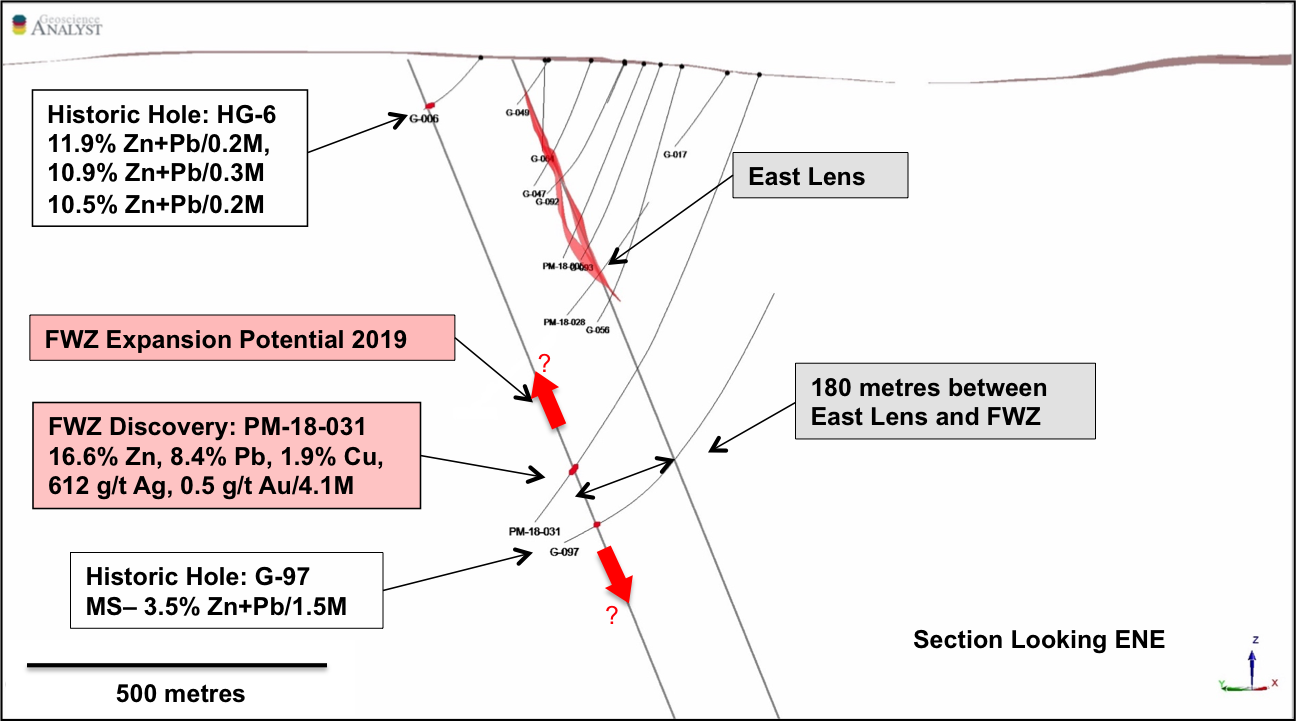
Cross Section (Click image for larger view)
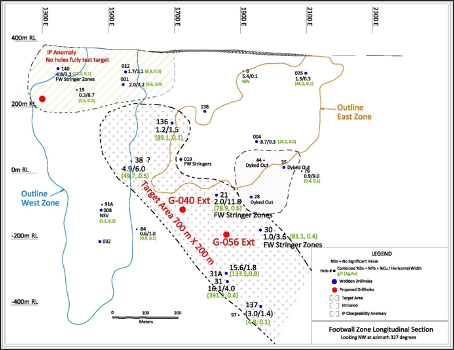
Long Section (Click image for larger view)
Pickett Mountain area of exploration, 2020
Exploration Potential
The Pickett Mountain massive sulphide horizon was discovered through soil geochemistry, geophysics and diamond drilling in the 1970’s and 80’s. The historical work was terminated before the limits and extensions of the horizon were well defined. Excellent potential exists at depth as well along strike to the southwest and northeast of the known deposit as exhibited by historical soil geochemical anomalies and coincident EM conductors. In addition, the historical regional soil sampling also delineated a number of soil anomalies that are not associated with the known horizon. These targets and extensions as well as the new footwall discovery (3.1 m at 38.2% ZnEq in hole 031) will be drill tested as part of the 2020 drill program.
At a regional scale, the Pickett Mountain horizon occurs in an extensive belt of middle Ordovician aged volcanic rocks that remains very prospective for hosting additional massive sulphide deposits. A detailed ground and airborne geophysical survey will be completed over the deposit and the entire belt to assist in the identification other targets that may exhibit a similar signature to the Pickett Mountain horizon.
Pickett Mountain project Cu + Zn + Pb soil sampling survey and Cross Section of FWZ Discovery
Expansion potential – geochemistry / geophysics
